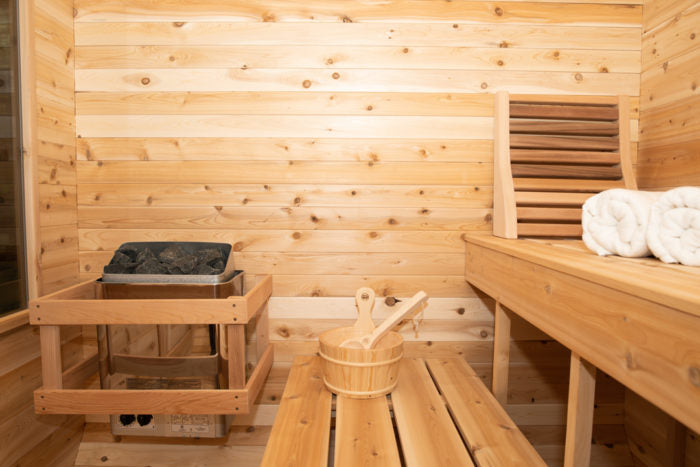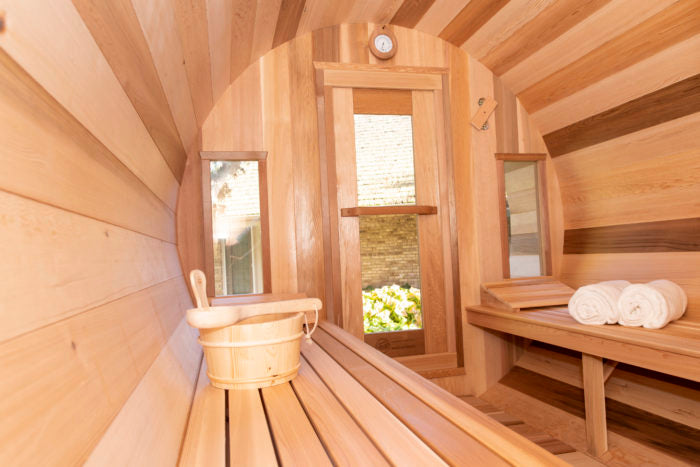Getting The Traditional Sauna To Work
Table of ContentsAll about Traditional SaunaUnknown Facts About Traditional Sauna4 Simple Techniques For Traditional SaunaFacts About Traditional Sauna RevealedThe Main Principles Of Traditional Sauna
Many of the weight lost in a sauna is water loss and is re-gained upon rehydrating. Without an uncertainty sauna can be a crucial part of a healthy weight loss program. To take a look at the differences in between conventional and IR saunas, I will separate these into verifiable, academic, and made distinctions.Hence, the best factor in the saunawhich goes to the ceiling straight over the sauna heateris typically in between 185 and 190 F. Claims that a conventional sauna surpasses 200 F is just not true and not relevant for electrical saunas marketed in the United States. The temperature level for a far-infrared sauna is typically set between 120 and 140 F; however, unlike the traditional sauna, the goal in and IR space is not to accomplish a heat.

When a traditional sauna has actually been effectively heated up, the sauna walls are cozy, the air temperature has accomplished set temperature level and the rocks are extremely heated. As an intriguing side note, the heated wall surfaces and the rocks are giving off far-infrared heat, integrated with the warmed air, to create an "covering warm".
The 8-Minute Rule for Traditional Sauna
When the high temperature level is attained, the components cycle on and off to maintain the heat. A lot of traditional sauna users take pleasure in putting water over the rocks to create steam to increase sauna moisture degrees. The benefits of putting water over the rocks include: making the room a lot more comfortable, moistening the nasal passages, and enabling the use of aromatherapy by blending necessary oils with the water.

When the power enters the i loved this body, it causes the body temperature to increase and ultimately leads to sweating. In an infrared sauna it is essential for the emitters/heaters to stay on practically frequently. Since there is no mass of rocks to retain heat, the sauna will certainly cool if the emitters turned off.
The 10-Minute Rule for Traditional Sauna
As pointed Read Full Article out above, the sauna bather in an infrared area desires to position himself before operating emitters to obtain maximum gain from the warmth. The home heating time for the two spaces can be extremely different, relying on exactly how the areas are utilized. For a typical sauna, a bather must allow 30-40 mins for the room to achieve a desired temperature level and to properly pre-heat the rocks.

A well created sauna will usually attain a temperature level of 150-160 F in concerning 30-40 minutes. For hotter temperature levels, the space might require to heat for a longer duration.
To some, 15 mins was "lost" while the infrared power warmed the wood panels instead of heating up a body, while others find a pre-heated area to be much more comfortable and believe an elevated starting temperature level is essential to start perspiring. The size of advised usage for every room is about the exact same (10-15 mins per session); however, due to the lower air temperature levels and the capability to feel the impacts of infrared warmth quicker than a standard sauna, it is not unusual for a person to spend a total of 20-30 minutes in an infrared sauna.
Getting My Traditional Sauna To Work

The ordinary expense per kWH of power in the U.S. is roughly $0.11, so a 4.5 kW heater will certainly set you back approximately $.50 to compete one hour, if the heating system runs continually for one hour. Typically a sauna heating unit will compete 75% of the first hour and 50% of succeeding hours on considering that the elements cycle once the established temperature is attained.
A 2 individual far-infrared space is typically physically smaller sized than a typical sauna, typically regarding 4' x 4' or smaller sized. The IR home heating system is commonly 1.5-1.7 kW utilizing a 120 volt 15 amp plug-in service. Given that the area can be made use of quicker than a sauna space, we will certainly assume the area is you can check here used for to of an hour consisting of heat up time.
Lastly, there is a hardly ever reviewed distinction in the social experience in between the 2 spaces. While our culture has shed some of the social advantage of the typical sauna experience, it can be really socially rewarding (Traditional Sauna). From family time in the sauna, to heart-felt discussions with loved ones, to sauna partiesthe conventional sauna experience can bring about intimate socializing
How Traditional Sauna can Save You Time, Stress, and Money.
Many higher end infrared spaces include tinted light therapy, noise systems and full-glass fronts.